The Year: 1645
Image: Slave Prayer Meeting
New Hampshire’s African heritage dates back to 1645 and centers on the state’s only port at Portsmouth. The first known black person in Portsmouth came from the west coast of Africa. He was captured one Sunday when slave merchants attacked his village in Guinea, killing about a hundred persons and wounding others.
Upon arrival in Boston, the slave was bought by a Mr. Williams of Piscataqua. When the General Court of the colony learned of the raid and kidnapping, it ordered the merchants to return the African to his home. Slavery was not the issue of concern—human bondage was legal. The court was indignant that the raiders had violated the Sabbath.
African Population
The size of the black population in the 17th century New Hampshire Colony was small, but surveys of wills and inventories show that slaves were included in the estates of several prominent early Portsmouth families. Eight slaves who worked in Richard Cutts’ Kittery shipyard were among the earliest blacks in the region. Five of the eight were willed to Widow Cutts in 1675.
Additional evidence that mulattoes, Negroes, and slaves were present can be found in the Colony’s laws. They were similar to laws enacted by other colonies, and their purpose was to control the behavior of slaves. A number of laws prohibited servants from roaming through town without their master’s permission, from being abroad in the night time after nine o’clock, and from drinking in public taverns.
Census figures during the colonial period are known to be inaccurate. Free blacks sometimes were counted with slaves or not counted at all, and at other times they were included with whites. The number of black people reported in provincial New Hampshire was only 70 in 1707, but the mulatto population had grown.
In 1691, Joanna Severett’s will stated that after her death her “Negro woman” was to serve her sister “twenty years and then be free” while she gave her “two servant boys” to her brother John without conditional freedom. The will of Jacob Treadwell, tanner, specified in 1770 that his servant Caesar was to serve his wife during her lifetime, then he could be free “if he chooses it if not I give him to my son Nathanial as he has been used to his business.” Treadwell’s wife died first, and his revised will granted freedom to Caesar “after my decease.”
Newspaper advertisements are especially interesting for the physical descriptions of runaway slaves, their skin coloring, body size and markings, temperament, and clothing. The following typically displays no sentimentality for a personal loss; it merely requests assistance in retrieving valuable property:
STOP THE RUNAWAY…from his Master William Cotton of Portsmouth, tanner, a Negro man about 5 feet 10 inches high, about 25 years of age, a stout spry fellow, upon the yellow order, a stripe upon his cheeks, left hand little finger broke off; two stripes from his navel round to his navel, had on a yellow colored pea jacket… Whoever will take up said Negro and convey him to his Master shall have forty five pounds reward and necessary charges paid by me.
Legal Status
Following the legal precedent of the colony of Virginia in 1652, laws in the New Hampshire Colony provided that the status of children as slave or free would be determined by the status of the mother. On June 10, 1760, a free mulatto woman named Leisha Webb, whose husband was a slave, insisted that the town clerk record that she and her eight children were free persons.
By having one’s free status placed in the public record, free blacks hoped to avoid being kidnapped and sold as runaway slaves. For more than a century Africans and black Americans were openly bought and sold throughout the New Hampshire Colony. Some free blacks bought slaves, not to own them but to free them.
Slaves were owned by well-known and affluent Portsmouth families who benefited from a thriving economy. Owners had the ultimate authority in the lives of slaves, including the right to separate and sell family members to different owners. A slave child would be sold when the child was no longer dependent on the mother, yet still young enough to be trained to suit a new owner.
Slaves could be given secondhand clothing, but the household would have to provide food, medical care, and lodging. With a limited need for slave labor in Portsmouth, those whose maintenance became too expensive were sold, as the following advertisement demonstrates:
To be sold very cheap for cash, for want of employ. A likely healthy Negro girl of about 15 years of age, understands all kinds of housework, will suit town or country.
Some slaves were sold because of their uncooperative behavior. Captured runaways faced the possibility of being sold to the West Indies, where owners of sugar plantations were well known for their harsh treatment of slaves.
Slaves didn’t have surnames and only occasionally an African first name. The common practice was for the owner to replace an African’s name with one thought appropriate for a slave, then the master’s family name was added to identify that slave with that owner. If sold, the slave took the new master’s name. Most emancipated slaves in Portsmouth kept the surname of the owner who granted them their freedom.
Slave Religion
West Africans believed that there was a High God, who created all things, who was assisted by Lesser Gods. They prayed to different gods for rain, fertility, and crops. Slaves kept their African concepts of the sacred and the profane, of ritual, spirit possession, and supernatural intervention into mundane human affairs.
Religion was a driving force during slavery in America. Once they arrived at their destination, enslaved Africans were subjected to various processes to make them more compliant, and Christianity was part of that. African religion was ridiculed by European-Americans who encouraged Negroes to convert to Christianity.
Africans were expected to forsake their own understanding of God for the religion of their oppressors. Civil and social laws in the colonies were reinforced by Biblical lessons that emphasized obedience to their masters and to white people in general.
Limited Freedom
Emancipation for Portsmouth’s slaves came for most during the years after the adoption of the New Hampshire constitution in 1783. The constitution didn’t mention the liberation of persons held in bondage, nor did it restrict those participating in the slave trade. Portsmouth shippers and merchants continued to capitalize on the demands of the southern slave-based economy.
In 1789, the New Hampshire House and Senate passed a bill stating that “slaves cease to be known and held as property” in the state. This didn’t end the practice of slavery, but provided a compelling reason to free the Colony’s slaves. Portsmouth was experiencing a recession, and owning slaves was becoming unprofitable.
But slaves and free blacks were restricted by their social status and the attitudes of whites toward them. They were still identified as part of the slave class. Earlier laws concerning free blacks remained in force. In churches, blacks still had to sit behind the white congregation or in the balcony. Jobs for blacks were still limited to menial labor.
Housing was a serious problem – combinations of families and single people often shared households. Free blacks were unwelcome in other communities because the towns didn’t want to provide them with food and housing if they weren’t self-supporting. Some blacks left Portsmouth. The rapidly growing population of free blacks in Boston, Newport, and Philadelphia offered employment and educational opportunities through black organizations.
SOURCES
The Growing New Nation
Slavery in New Hampshire
The Place Her People Made

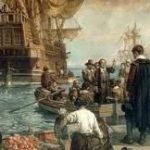

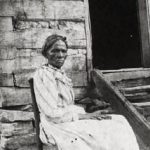
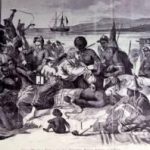
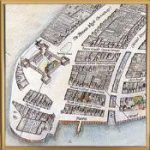
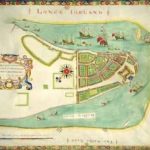
The Town History of Canterbury, N. H. Includes. Section on Loudon, N. H. Loudon separated from Canterbury to become its own entity.
In the Loudon section of the Canterbury history there is reference to the 1773 and 1776 Town Census. These censuses indicate a “female slave” and a “female slave for life”. I would like to find out more about this woman and to see if she died and is buried in Loudon.
Your image of a prayer meeting does not reflect the worship style of a Black community in northern New England. Otherwise, the content looks very familiar! ~Valerie
Great summary information about the topic. Thanks.
I’ve seen the very tiny monument to Harriet Wilson, in Milford, NH…off the center of town…barely noticeable as it sits behind some bushes and it’s only about 4′ tall. NH, hiding its hate!
You must have missed the Wilson Statue. It is over 8 feet tall in Bicentennial Park in Milford. The statue on the oval is of children reading. The Wilson statue was unveiled in 2006